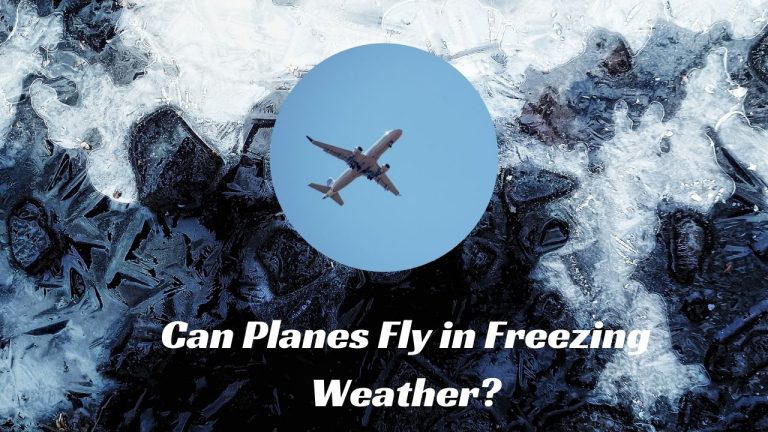Flying in freezing weather is a topic that often sparks curiosity and concern among travelers. However, with modern advancements in aviation technology and stringent safety measures, flying in freezing temperatures is not only possible but also routine for commercial aircraft worldwide.
The Role of Aircraft De-Icing Procedures
Aircraft de-icing procedures play a critical role in ensuring safe operations during cold weather. Before takeoff, aircraft undergo thorough de-icing processes to remove any accumulated ice or snow from the wings, fuselage, and critical components. This is typically done using specialized de-icing fluids or heated air, which effectively melt away ice and prevent it from interfering with the aerodynamic performance of the aircraft.
Read Also: Can Planes Fly in the Snow?
Engine Performance and Cold Weather Operations
One of the primary concerns when flying in freezing conditions is engine performance. Cold temperatures can affect the efficiency and reliability of aircraft engines, leading to potential challenges during takeoff and climb phases. However, modern jet engines are equipped with sophisticated heating systems and fuel additives that help maintain optimal performance even in extremely cold environments.
Airframe Design and Cold Weather Endurance
The design of modern aircraft takes into account the challenges posed by freezing weather. Airframe materials are carefully selected to withstand low temperatures and minimize the risk of structural failures due to icing or thermal stress. Additionally, advanced aerodynamic features, such as wing anti-icing systems and heated leading edges, further enhance the aircraft’s ability to operate safely in cold weather conditions.
Read Also: Can Planes Fly in Heavy Rain?
Flight Crew Training and Cold Weather Preparedness

Flight crews undergo extensive training to handle cold weather operations effectively. From understanding the effects of icing on aircraft performance to implementing contingency plans for emergency situations, pilots and cabin crew members are well-prepared to manage flights in freezing weather. This includes closely monitoring weather forecasts, coordinating with ground crews for de-icing procedures, and executing proper in-flight protocols to ensure passenger safety.
Regulatory Standards and Cold Weather Certification
Regulatory authorities such as the Federal Aviation Administration (FAA) and the European Union Aviation Safety Agency (EASA) have stringent guidelines in place to regulate cold weather operations. Aircraft manufacturers must adhere to these standards and obtain certification for their aircraft to operate in freezing conditions. This includes rigorous testing of aircraft systems and components to ensure they can withstand the challenges posed by low temperatures and icing.
Conclusion
In conclusion, modern aircraft are designed and equipped to handle the rigors of flying in freezing weather. From comprehensive de-icing procedures to advanced engine heating systems, every aspect of aviation is meticulously engineered to ensure safe and efficient operations, even in the coldest of conditions. With the combination of cutting-edge technology, stringent safety measures, and highly trained flight crews, passengers can rest assured that flying in freezing weather is a routine and well-managed aspect of modern air travel.
Read Also: Can Airplanes Fly in the Fog?

